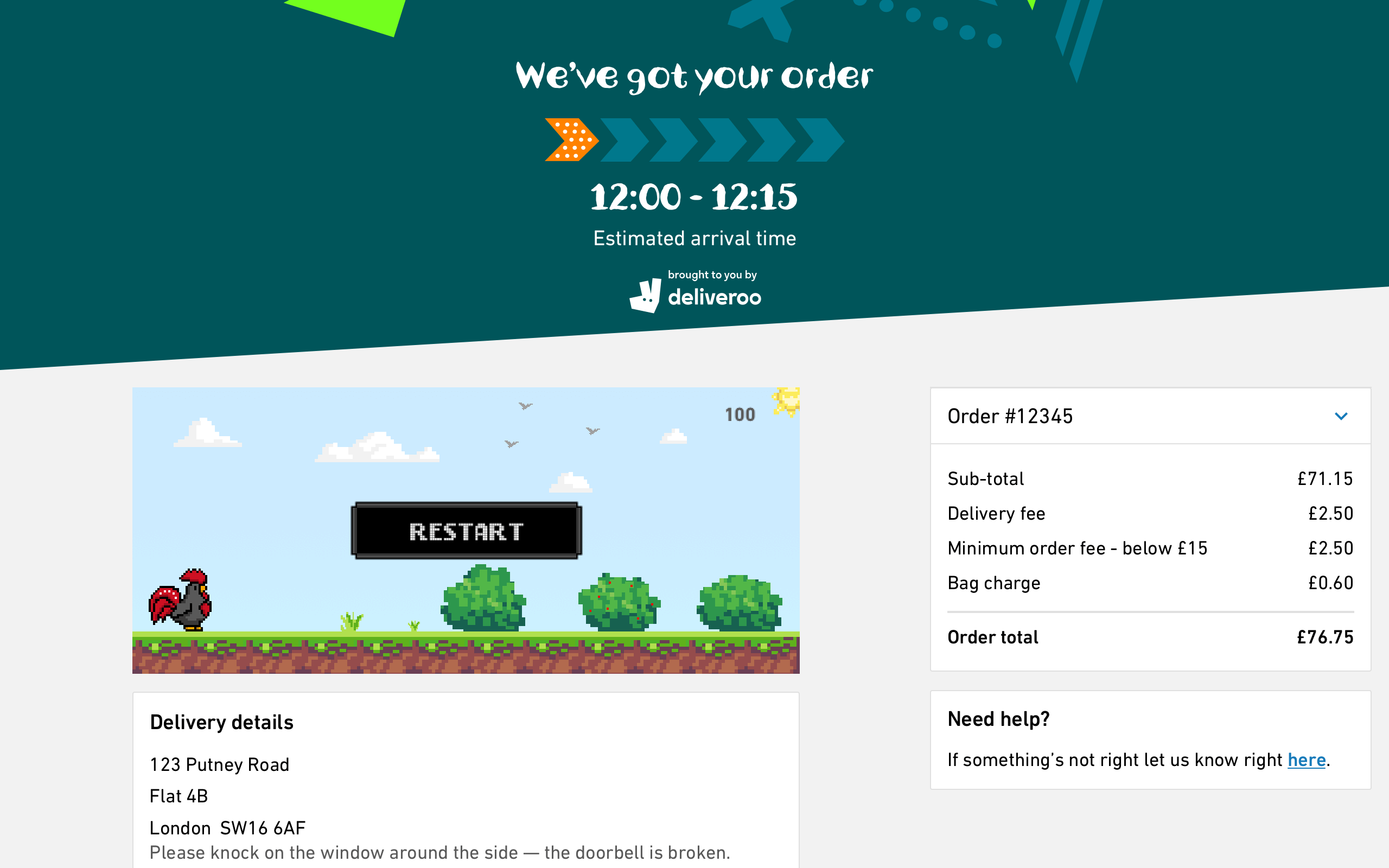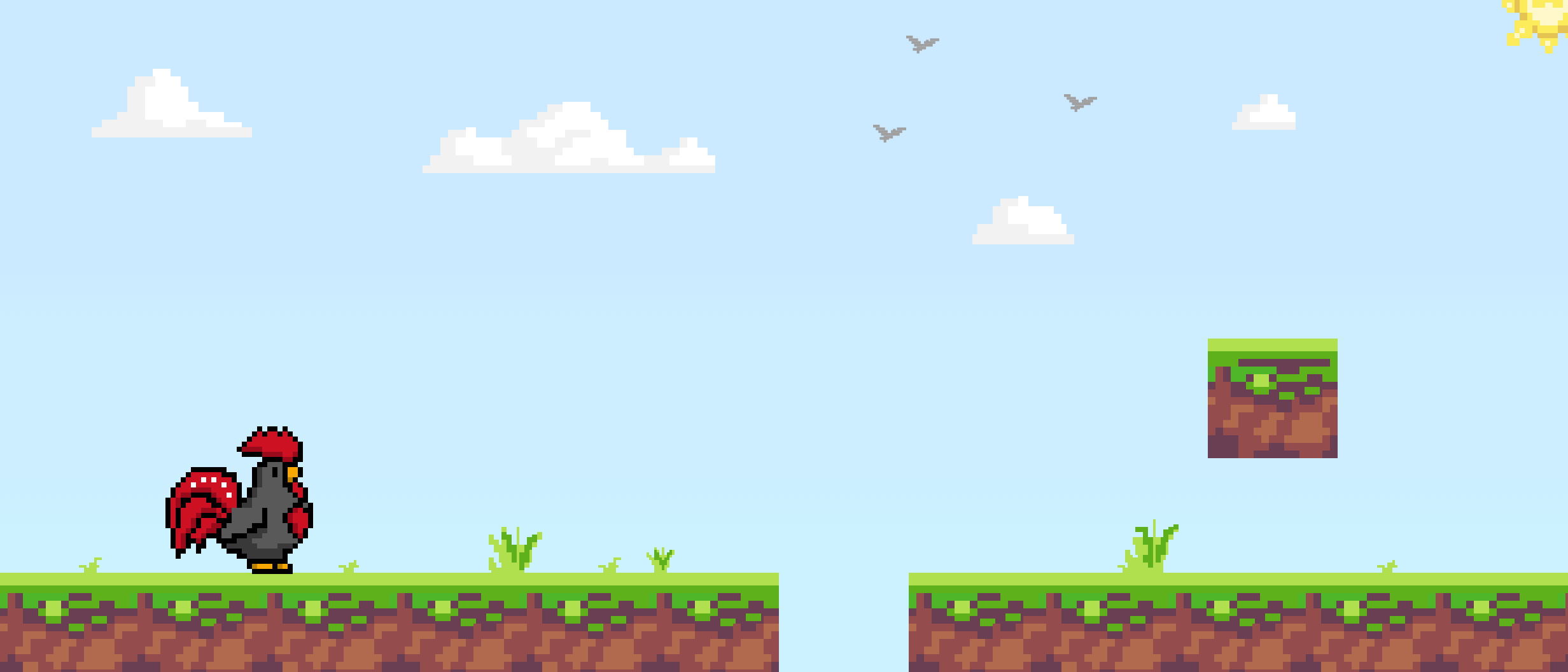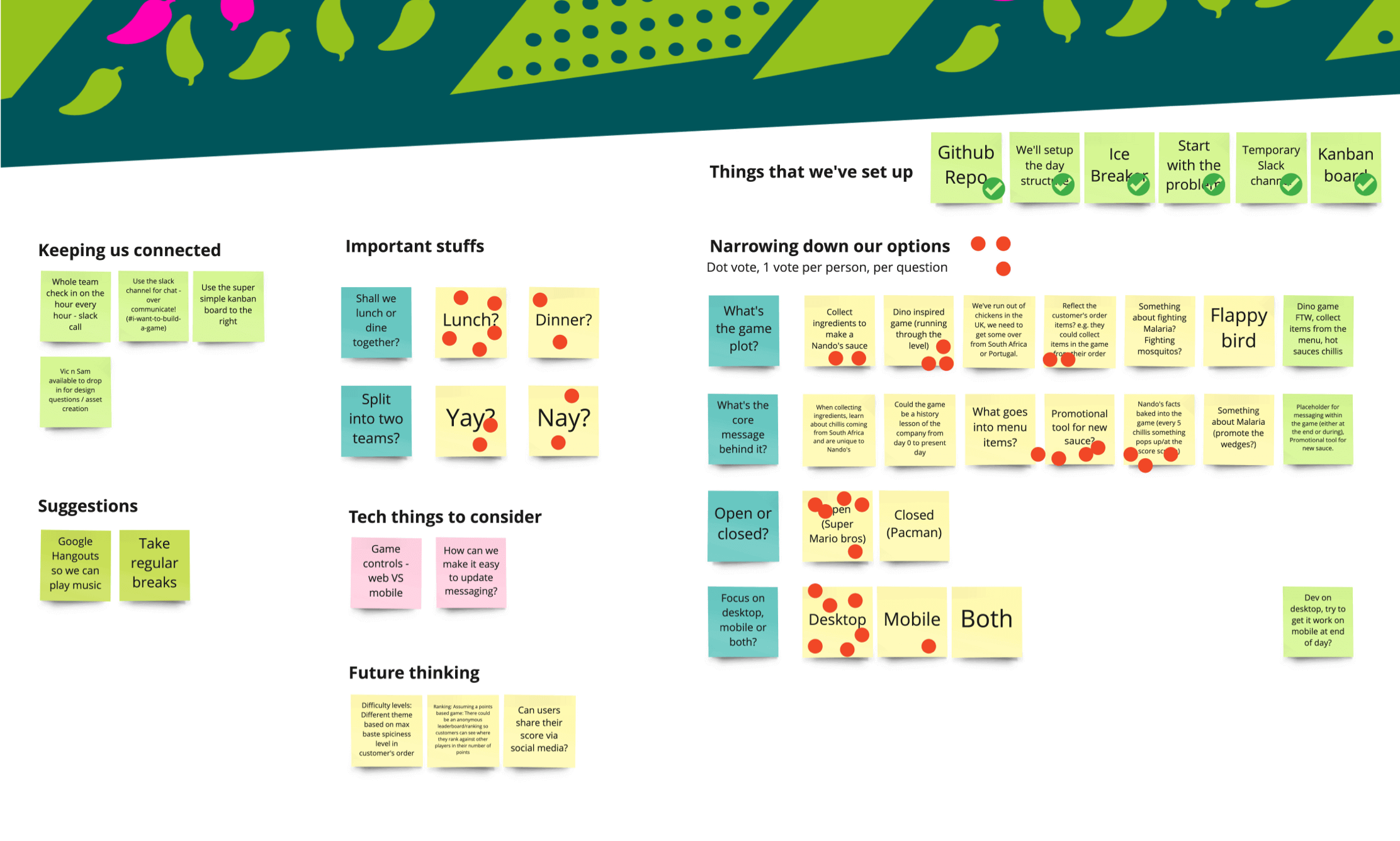Overview
A one full day dedicated to a hackathon, to sharpen game design skills and to boost team morale on the Fulfilment team at Nando’s.

A one full day dedicated to a hackathon, to sharpen game design skills and to boost team morale on the Fulfilment team at Nando’s.

The Fulfilment Team was the second cross-functional team I worked on at Nando’s, we dealt with the experience after the customer had clicked submit on their food order (in either the mobile app or the website). The journey comprised of signifying delivery updates and housing a place for the user to edit, cancel or update their order.
The cross-functional team consisted of a tech lead, project manager, software engineers, and an internal UI designer from Nando’s and myself as the sole UX designer.
My involvement was to take requirements from the business, run usability tests and implement changes using UX processes based on the Google Double Diamond. Due to Deliveroo partnering with Nando’s we had to cross-check UI before development to adhere to contractual obligations.
After a team retrospective, the team was feeling the pressures and the monotonous nature of the project. Another output from the retro was that we all felt the fulfillment journey was lacking personality. We felt that we were missing an opportunity to inject fun back into the fairly flat designs. Nando’s is a fun brand and as a team, we wanted to reflect that in the work we were doing.
A small game embedded within the purchase journey, not only could it be a great marketing tool, but also could be friendly competition whilst you’re waiting for your food.
Research strategies were developed by myself, ran past the team for their input, and then executed with the help of Tina (Nando’s dedicated UX Researcher). For this particular project, no in-depth research was necessary, because we hypothesised the business wouldn’t pursue the outputs of the hackathon any further. However, we spoke with other UX Designers who worked on the purchase journey (inside of the restaurant locations) and noticed users were frustrated if they had to wait more than 15 minutes for their food.
Our target audience for this project was all of Nando’s user base, the main personas, in particular, were Gen-Z customers. Gen-Z was our focus due to being most active on social media with the majority of the user base has played games before. Although, from the beginning, we wanted to make the game as simple as possible, so that any user type could easily grasp it.
Once we had business buy-in, the team and I jumped into Miro and started to plan out how we would run the day. In one morning, we managed to loosely map out the day of activities.
Between Victor (the UI designer) and myself, we decided to pull some examples of games and get a head start on the UI. We opted for an 8Bit pixel-style approach to keep things super simple and easily scalable across different screen resolutions.
As a team, we agreed that the agenda for the day would be fluid and that we would adjust it based on how much of the game we had completed:

To kick things off, I started to look at game sounds and sound design. I began to download a few sound effects we could utilise within the game. The sounds design process was a lot of fun, I got to flex my musical muscles and mess around in music production software all morning. In just a morning I had come up with a few options for the main theme music, I then moved on to the key sounds: start, jump, next level, end level, etc.
With the key sounds finalised, Victor (UI Designer) and I started designing the scenes of the game in Sketch. Starting with a Mario-style background consisting of clouds, sun, trees, and hedges we had the idea that the character could jump over these to build up the player's score.
Lastly, to speed up the process the developers decided to duplicate the code from the classic Google Chrome Dino run game. This would be the basis for our game mechanics and main source code.
The team and I managed to produce a fully playable game in just one day! All of us were super proud of what we accomplished and brought us closer together as a team.
Ultimately, the game and the hackathon strategy were presented back to the business, however, senior stakeholders didn’t see value in the game but wanted to implement our hackathon template for future sessions within the company. The outcome wasn’t what we intended, but the team and I were happy that the business would allow other teams to run hackathons.
Key learnings
What I'd do differently